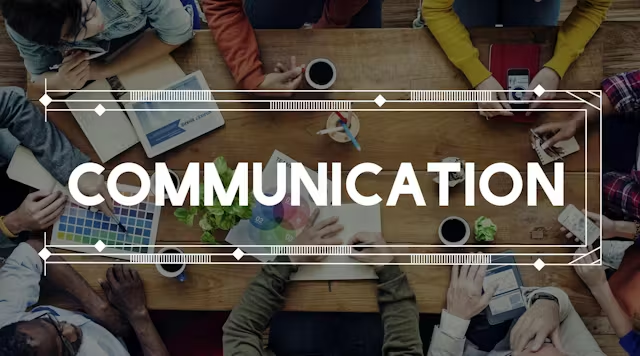In the world of business, communication goes beyond just words. Nonverbal cues—body language, facial expressions, gestures, and even silence—play a crucial role in shaping how messages are received and interpreted. Mastering nonverbal communication can enhance your ability to lead, collaborate, and negotiate effectively, making it an essential skill in any professional setting. In this post, we’ll explore the power of nonverbal communication in business and how you can leverage it to improve your interactions.
1. Understanding the Impact of Nonverbal Communication
Nonverbal communication often speaks louder than words. It accounts for a significant portion of the messages we convey, influencing perceptions, emotions, and outcomes in business interactions. Key elements include:
- Body language: Posture, gestures, and movements can reveal confidence, openness, or discomfort.
- Facial expressions: Emotions like happiness, anger, or surprise are often communicated through facial cues, even when unspoken.
- Eye contact: Maintaining or avoiding eye contact can signify engagement, trust, or disinterest.
- Tone of voice: The pitch, volume, and pace of your speech can add layers of meaning to your words.
- Proxemics: The physical distance between you and others can convey intimacy, authority, or aggression.
Understanding these nonverbal elements helps you interpret others’ intentions more accurately and ensures that your own messages are clear and effective.

2. Enhancing Workplace Relationships
Strong workplace relationships are built on trust, and nonverbal communication plays a vital role in establishing and maintaining this trust. Here’s how you can use nonverbal cues to strengthen your professional relationships:
- Be aware of your body language: Adopt an open and approachable posture to encourage positive interactions. Avoid crossing your arms or turning away from others, as these can be perceived as defensive or disinterested.
- Use facial expressions to convey empathy: Smiling, nodding, and mirroring others’ expressions can show that you are engaged and understanding their perspective.
- Maintain appropriate eye contact: Balanced eye contact demonstrates confidence and attentiveness, fostering a sense of connection and trust.
By being mindful of your nonverbal communication, you can create a more inclusive and collaborative work environment.
3. Nonverbal Communication in Leadership
Effective leadership relies heavily on nonverbal communication. Leaders who master this skill can inspire confidence, guide teams more effectively, and navigate complex situations with ease. Key strategies include:
- Projecting confidence through posture: Stand tall, with shoulders back and head up, to exude authority and self-assurance.
- Using gestures to emphasize points: Deliberate hand movements can reinforce your message and help maintain your audience’s attention.
- Controlling facial expressions in high-stress situations: Keeping a calm and composed face during challenging moments helps reassure your team and maintain morale.
- Listening with your body: Leaning slightly forward, nodding, and maintaining eye contact while others speak shows that you value their input and are fully engaged.
Leaders who communicate effectively through nonverbal means are more likely to earn respect and motivate their teams.
4. Nonverbal Cues in Negotiations
Negotiations are often high-stakes scenarios where nonverbal communication can significantly influence outcomes. To enhance your negotiation skills:
- Observe the other party’s body language: Look for signs of agreement, hesitation, or resistance. This can help you adjust your approach in real-time.
- Control your own nonverbal signals: Stay calm and composed, even if the negotiation becomes tense. Avoid fidgeting or displaying signs of nervousness, as these can undermine your position.
- Use mirroring to build rapport: Subtly mimicking the other party’s gestures and posture can create a sense of connection and make them more receptive to your proposals.
- Watch for microexpressions: Brief, involuntary facial expressions can reveal true feelings before someone has a chance to mask them.
Mastering nonverbal communication in negotiations can give you a distinct advantage, helping you to better understand your counterpart and negotiate more effectively.
5. Improving Nonverbal Communication Skills
Improving your nonverbal communication skills requires self-awareness, practice, and a willingness to learn from feedback. Here are some steps to get started:
- Self-assess your nonverbal habits: Reflect on how you naturally use body language, facial expressions, and gestures. Consider how these might be perceived by others.
- Seek feedback from colleagues: Ask trusted colleagues for their observations on your nonverbal communication. They can provide insights you might not be aware of.
- Practice mindfulness: Pay attention to your nonverbal cues in different situations. Notice how your body language changes in response to stress, excitement, or boredom.
- Learn from others: Observe how effective communicators in your workplace use nonverbal cues. What can you incorporate into your own style?
By continuously refining your nonverbal communication skills, you can become a more effective and influential communicator in the business world.
Conclusion
Nonverbal communication is a powerful tool in the business landscape. Whether you’re leading a team, negotiating a deal, or building relationships, understanding and mastering nonverbal cues can significantly enhance your effectiveness. By being mindful of how you communicate without words, you can project confidence, build trust, and navigate the complexities of business interactions with greater ease.


